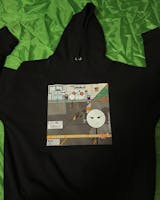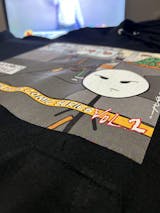With the developments in printing technology, the importance given to sustainability in materials used in printing and textile products attracts the attention of companies. This situation aims to make environmentally sensitive production in dtf printing technology. The principle of sustainability in printing has many advantages. These advantages are mainly to care about environmental factors and to prevent waste generation in the environment by creating an environmentally sensitive production process. Products made of natural components do not harm the environment and also inform consumers about environmental sensitivity. Every step taken in dtf printing technology to create a developing and clean environment is beneficial for textile companies.
There are many types of applications in sustainability applications in dtf printing. These applications are primarily the materials to be printed. The fact that the supplied textile products are suitable for recycling is the first way to experience environmental sensitivity in the printing process. If the materials of textile products are suitable for recycling, waste generation in the environment is prevented and waste fabric generation is prevented thanks to recyclable fabrics. Recycled fabric pieces can be easily used in every type of textile printing. It is very useful to use fabrics suitable for recycling to prevent the damage caused by waste materials to the environment. Environmentally friendly products and fabrics do not pose a threat to the producer or the consumer. Safe prints are produced from safe materials and brought to buyers. In this way, a sustainable environment is created.
Use of Environmentally Friendly Materials
It is necessary to pay attention to whether the materials used are environmentally friendly while printing. Using environmentally friendly products does not create waste and does not contain harmful substances. Materials produced from components that are not harmful to human health and the environment aim to provide a service that lasts for years. Especially using environmentally friendly inks is important for human health. Inks consisting of harmful chemical components mix into the environment and air and pose a threat. Using environmentally friendly inks prevents damage to the environment by being made up of water-soluble materials and natural components. The use of inks consisting of natural components in dtf printing contributes to the formation of a sustainable environment.
Saving water and energy is an application that provides savings during print production and is aimed for a sustainable life. Paying attention to the use of water in particular is a beneficial application for the environment in every field. Energy consumption used in printing is also a point to be considered within the sustainability application. The fact that dtf printing devices and printers work hard in energy consumption can reduce energy efficiency. At the same time, devices that require constant repair reduce energy efficiency. Therefore, regular maintenance of technological devices and materials, constant control and correct operation shows that sustainability is given importance by saving energy.
Waste Reduction Strategy Applications
One way to reduce waste in printing is to make fabrics recyclable. Instead of the materials used being thrown away, materials are ready to be used again and again by being recyclable. Developing various strategies for waste reduction and using the necessary applications for dtf printing prevents waste generation. Preferring companies and suppliers that produce environmentally friendly products in terms of product supply advances sustainability in printing production. Manufacturers can organize various programs for waste reduction and sustainability practices and conduct informative studies for everyone. If awareness is raised against the environment, sustainable production of prints is ensured. In this way, sustainable printing and a clean environment are achieved by producing the prints produced in an environmentally sensitive manner.








